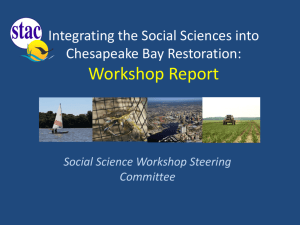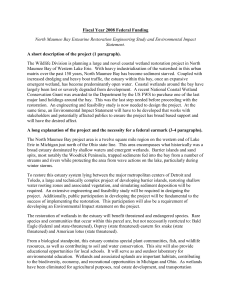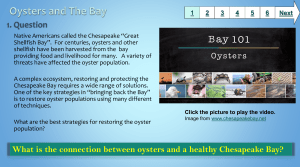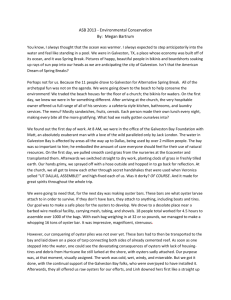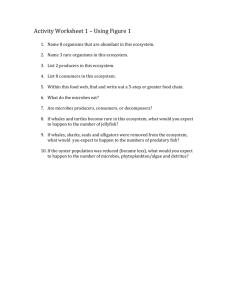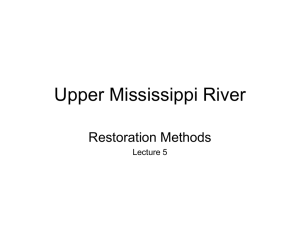examples document - Chesapeake Bay Program
advertisement
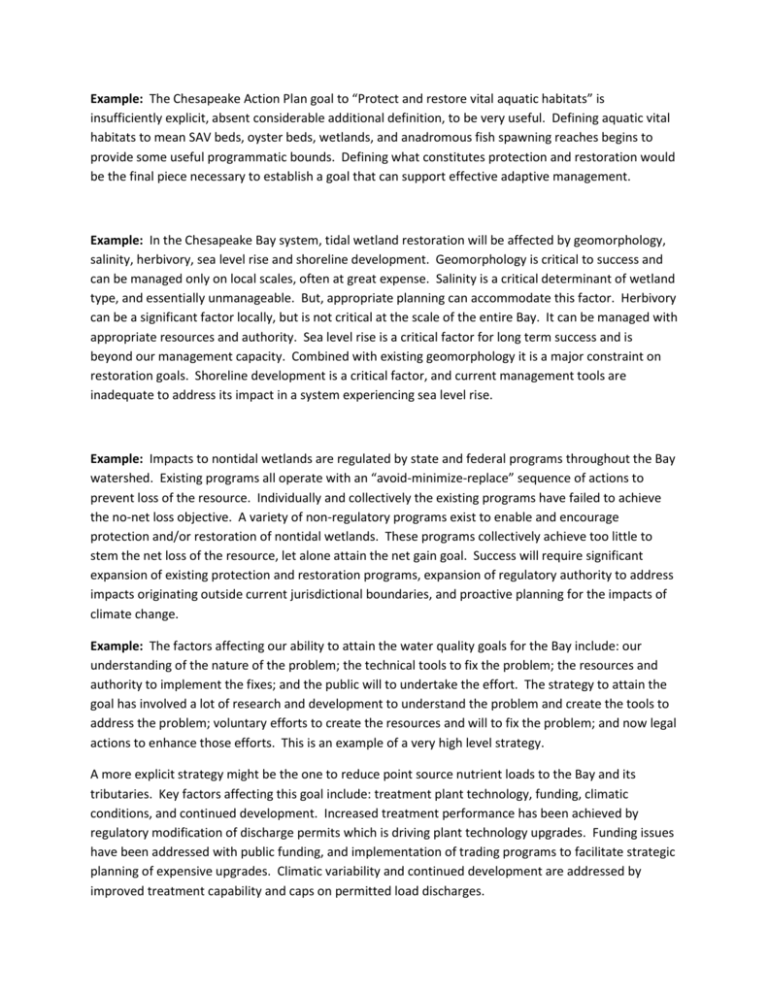
Example: The Chesapeake Action Plan goal to “Protect and restore vital aquatic habitats” is insufficiently explicit, absent considerable additional definition, to be very useful. Defining aquatic vital habitats to mean SAV beds, oyster beds, wetlands, and anadromous fish spawning reaches begins to provide some useful programmatic bounds. Defining what constitutes protection and restoration would be the final piece necessary to establish a goal that can support effective adaptive management. Example: In the Chesapeake Bay system, tidal wetland restoration will be affected by geomorphology, salinity, herbivory, sea level rise and shoreline development. Geomorphology is critical to success and can be managed only on local scales, often at great expense. Salinity is a critical determinant of wetland type, and essentially unmanageable. But, appropriate planning can accommodate this factor. Herbivory can be a significant factor locally, but is not critical at the scale of the entire Bay. It can be managed with appropriate resources and authority. Sea level rise is a critical factor for long term success and is beyond our management capacity. Combined with existing geomorphology it is a major constraint on restoration goals. Shoreline development is a critical factor, and current management tools are inadequate to address its impact in a system experiencing sea level rise. Example: Impacts to nontidal wetlands are regulated by state and federal programs throughout the Bay watershed. Existing programs all operate with an “avoid-minimize-replace” sequence of actions to prevent loss of the resource. Individually and collectively the existing programs have failed to achieve the no-net loss objective. A variety of non-regulatory programs exist to enable and encourage protection and/or restoration of nontidal wetlands. These programs collectively achieve too little to stem the net loss of the resource, let alone attain the net gain goal. Success will require significant expansion of existing protection and restoration programs, expansion of regulatory authority to address impacts originating outside current jurisdictional boundaries, and proactive planning for the impacts of climate change. Example: The factors affecting our ability to attain the water quality goals for the Bay include: our understanding of the nature of the problem; the technical tools to fix the problem; the resources and authority to implement the fixes; and the public will to undertake the effort. The strategy to attain the goal has involved a lot of research and development to understand the problem and create the tools to address the problem; voluntary efforts to create the resources and will to fix the problem; and now legal actions to enhance those efforts. This is an example of a very high level strategy. A more explicit strategy might be the one to reduce point source nutrient loads to the Bay and its tributaries. Key factors affecting this goal include: treatment plant technology, funding, climatic conditions, and continued development. Increased treatment performance has been achieved by regulatory modification of discharge permits which is driving plant technology upgrades. Funding issues have been addressed with public funding, and implementation of trading programs to facilitate strategic planning of expensive upgrades. Climatic variability and continued development are addressed by improved treatment capability and caps on permitted load discharges. Example: Improving water quality by planting riparian forest buffers along miles of Bay tributaries is founded on reasonably strong science that documents the benefits of forest buffers. The assumption is that miles of new forest buffers will result in improved water quality. The strategy to achieve the goal addressed the issues of increased public understanding of the values of buffers (using outreach education), identification of appropriate sites (using remote sensing and local knowledge), and provision of necessary resources (grants and cost share programs). Appropriate monitoring for adaptive management would include tracking the implementation efforts (how many miles of buffers were actually planted); and tracking the desired outcome (did local water quality improve). Reducing uncertainty in the simple system model, however, might require additional monitoring to track other factors that could impact local water quality, confounding the signal generated by the forest buffer (e.g. changes in local land use, altered hydrology, or climatic variability). Example: Oyster restoration typically involves creation of new oyster reefs by placement of oyster shell in piles or spread across the Bay bottom. Restoration success in areas that are not merely put-and-take efforts is defined in terms of the long-term persistence of an oyster population on the site. Assessing success is accomplished by sampling a site and documenting the number of living oysters and the population age structure. With knowledge of the life cycle, typical growth rates, and fecundity of native oysters, the degradation rates of un-colonized shell, and the relationship of disease organisms and salinity, it is possible to identify a trajectory for both population size and composition that would be consistent with potential survival of the reef after one, two, three, four, and five years. It should be possible to identify failure almost immediately if few or no live oysters are found at any point. Establishment of sizeable, persistent cohorts of older oysters over time would be the metric of potential success. Example: Efforts to facilitate SAV restoration in the lower Bay by dispersal of seeds or other propagules has been attempted for many years. Repeated failures to establish self-sustaining populations, combined with emerging research on population dynamics, has led to revised strategies, that focus resources and efforts on other restoration activities that have higher probabilities for success. This is an example adaptive management driven by clear goals, defined strategies, effective monitoring, and careful assessment.

